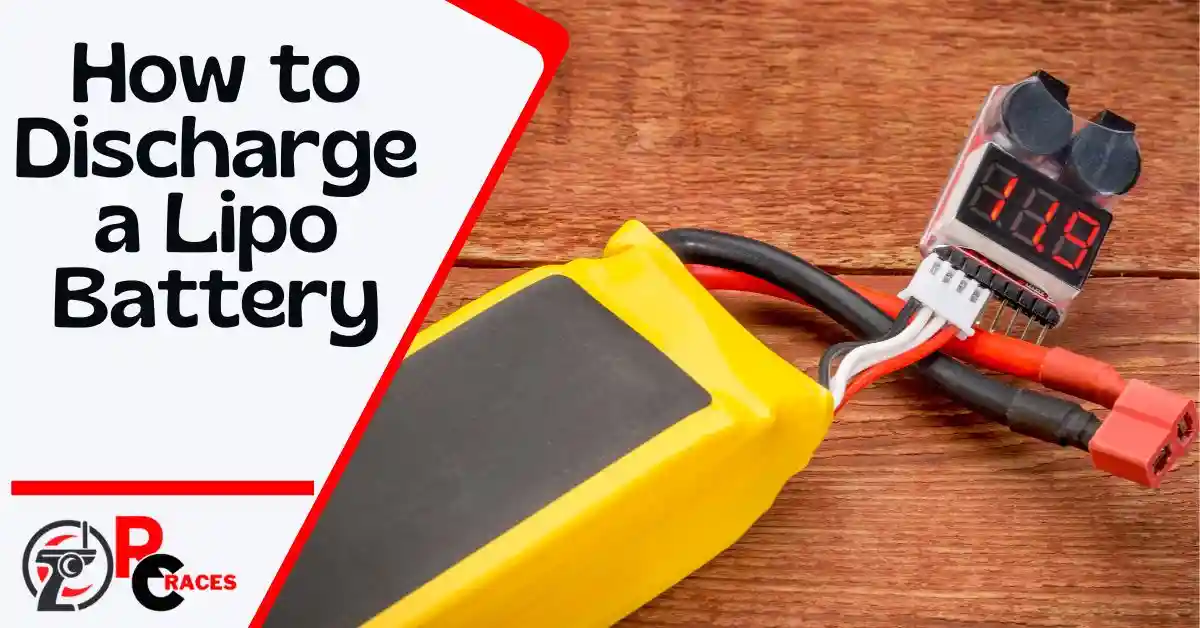You may have an extra LiPo battery you don’t need right now! In such a case, it is crucial to know how to store it and if you can store it charged. –
So how to discharge a lipo battery for storage?
LiPo batteries need to be properly discharged before you can store them. Now there are a few ways to discharge the battery. The cheapest option is using a 3-in-1 battery discharger. Charging the charger and using a smart ISDT charger are also options.
These are just the names of the processes of discharging. Here we will see the detailed process for you.
Should Lipo Batteries Be Stored Charged?
When lithium-polymer batteries are fully charged, they should not be kept. Because the battery’s chemistry is so delicate. There are some safety measures for LiPo batteries.
Batteries can’t be stored at high temperatures. It is because of a chemical reaction that occurs inside of them. It also sets off a cascade of events that could result in a massive explosion.
The battery can become stressed if you keep it in storage for a lengthy period of time; even though it is completely charged. As a result, the battery expands.
A year of leaving a fully charged battery at ambient temperature will result in a loss of 20 percent of its original capacity.
As a result, it is advised that batteries be kept in a cold, dry location.
How to Discharge a Battery?
We already said that LiPo batteries cannot be stored without discharging. Discharging is the act of the battery losing full voltage. Besides, just using the battery won’t discharge it.
If a LiPo battery isn’t charging, that does not mean it is discharged.
So how do you discharge a lipo battery for storage?
Using a 3in1 Battery Discharger
It will cost you very less money. But it is capable of more than a fine job despite its low price.
All it needs is just a few minutes, most batteries can be completely discharged with this battery discharger.
It allows you to select a discharge voltage limit. Setting the voltage at the correct level can help prevent over-discharge. You’ll have one less thing to worry about as a result of this.
In addition, it will ensure that all cells are discharged at the same rate, ensuring a correct equilibrium.
Remember, this cannot charge LiPo batteries. If you want to charge a LiPo battery without a charger, there are other ways.
Charging the Charger
This is a smart technique to drain your Lipo battery without wasting a lot of energy. In addition to reducing energy consumption, it saves time. However, a battery-powered Lipo charger is required for this.
In this case, the charger will be powered by a fully charged Lipo battery. In the process, it will also recharge additional depleted Lipo batteries. Using a parallel charging board will allow you to drain numerous batteries at once.
When configuring the charger’s minimum input, proceed with caution. The battery’s life can be put at risk by even the smallest of miscalculations. Lipo battery will not charge if your battery is discharged below 3.2V.
Keeping an eye on the voltages of the cells is also important. To ensure that the voltages in the different cells are equal, use a Lipo-checker.
Using the ISDT Smart Discharger
The best discharge tool money can buy is widely used by experts throughout the world.
Incredibly safe and precise operation characterizes the iSDT FD200 intelligent discharger. To halt the discharger, you can input a preset voltage. Controlling the discharge rate of Lipo batteries is also possible.
It’s as simple as plugging in a battery and selecting a battery type. Select the ‘Lipo battery’ if you’re dealing with this situation. Now, in this process, decide on the cell count of the battery. Cell counts for lipo batteries range from 2 to 12, with the most common being 6.
You’ll be asked to select an amps value after selecting a cell count. Your battery’s discharge rate will be determined by this setting.
A fully charged 3s Lipo battery may be discharged in five minutes at a discharge rate of 25 Amps.
With your smartphone, you can monitor and manage the discharge at the same time. All of these benefits may come with a steep price. However, the price is well worth it!
With these three alternatives, you can effortlessly deplete your Lipo battery for storage.
You can now safely keep the battery at room temperature after it has been properly discharged. Keep a tight eye on the battery as it is being discharged.
Lipo Battery Storage Tips
Now we know how to discharge the battery properly. But storing it directly after discharging is not a good idea. Being mindful of the next tips is very important.
We listed out what is best storage for lipo batteries:
- It’s not good for Lipo’s to have a full charge or less than 40%.
- The battery will be damaged if the storage voltage is either low or too high.
- In the event that you don’t use them on a regular basis, check them out once a month.
- Make sure to keep LiPo batteries out of reach of open flames. Places to avoid include wood or carpet in a metal or glass box in your garage.
- Always keep your LiPo battery at room temperature and in a fireproof LiPo bag while storing it for long periods of time.
- Keep the battery in a temperature-controlled area that is dry and neither too hot nor too cold. This is a general rule and might be a bit expensive. But it’s definitely worth every last penny!
- If it’s discharged properly, you have to keep one last thing in mind which is, storing it at room temperature.
That is all for today.
FAQs
What rate should I discharge LiPo for storage?
The discharge rate of LiPo batteries for storage should be around 3.8v per cell. This is the proper storage volt of any LiPo battery. For long-term storage, this should be the volt you set. But, the current state of the battery must also be considered.
How long can you keep a LiPo battery in storage?
LiPo batteries can be kept in storage for as long as you want. There is no fixed expiration date. But the quality of the batter slowly deteriorates after some time. Usually, after 18 months of storage or usage, the performance of the battery will start to go down.
Do Lipos discharge over time?
Yes, if handled without proper care, LiPo batteries can discharge. Say the battery might discharge beyond its C rating or end up getting over-discharged. In that case, the electrolyte inside of the cells will begin to vaporize.
Conclusion
So, now we know how to discharge a lipo battery for storage. We mentioned three methods. Use the method which suits you best.
Also, remember before you store, pay heed to the tips you mentioned. All of these should be enough.
Good luck!


